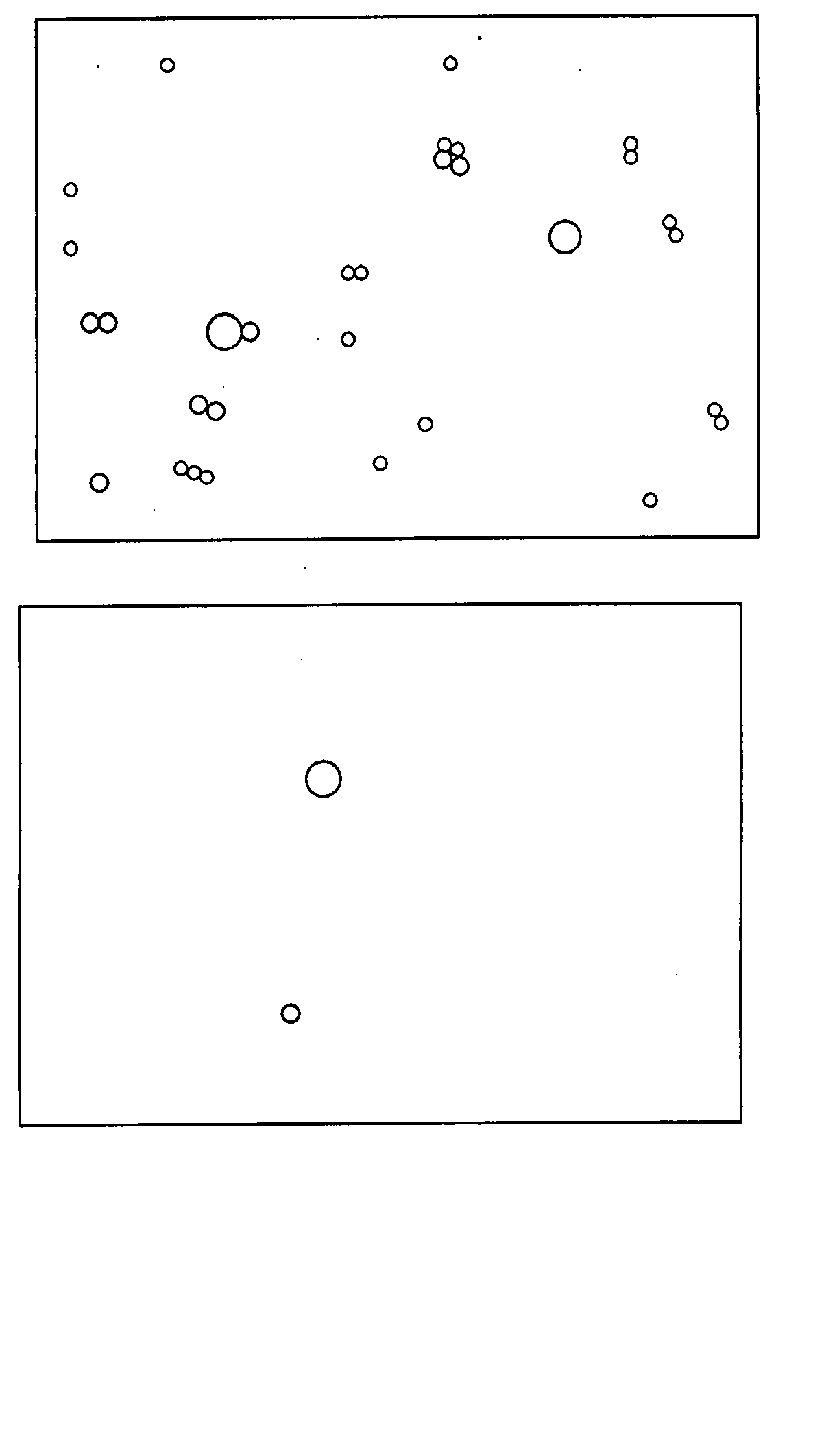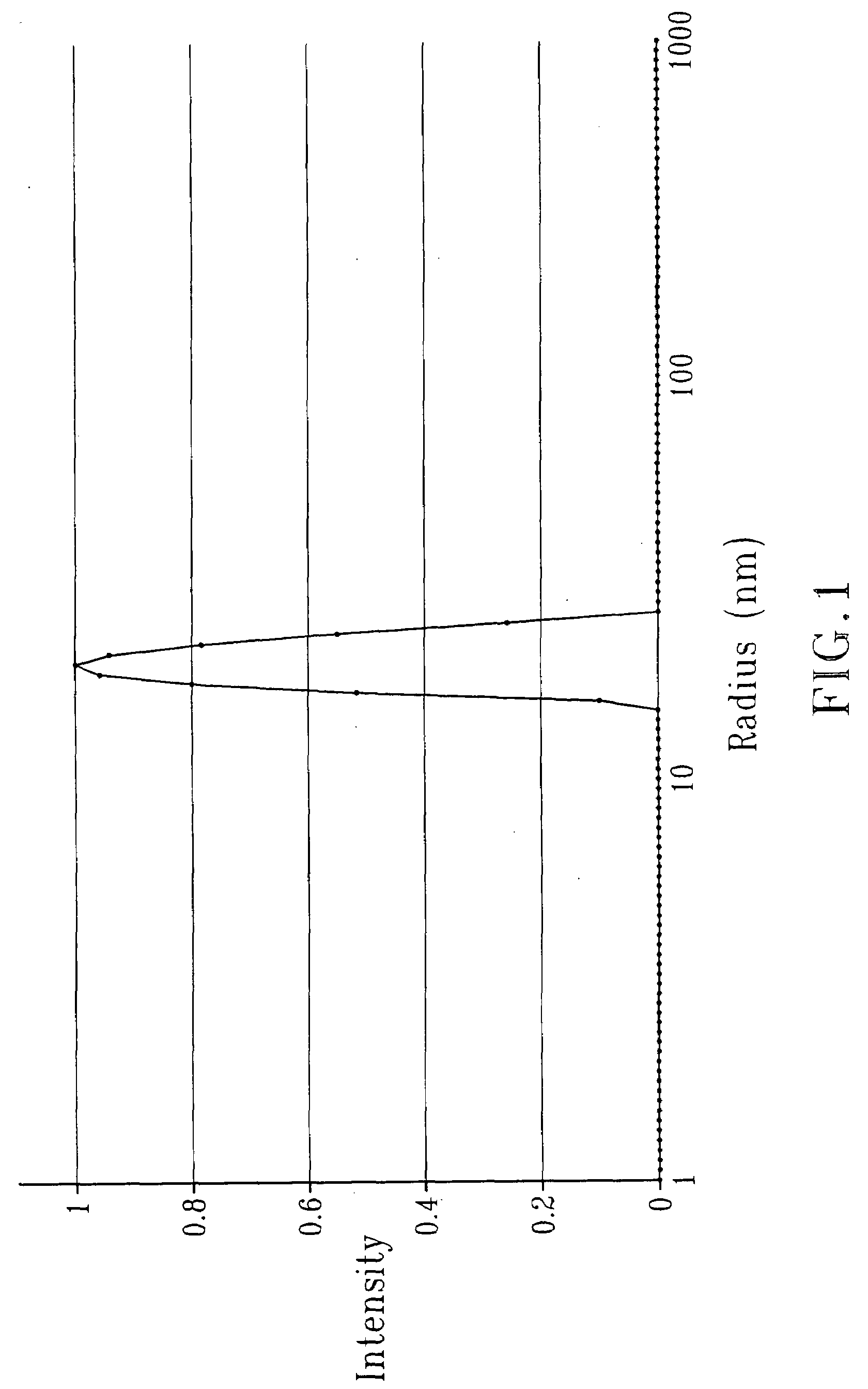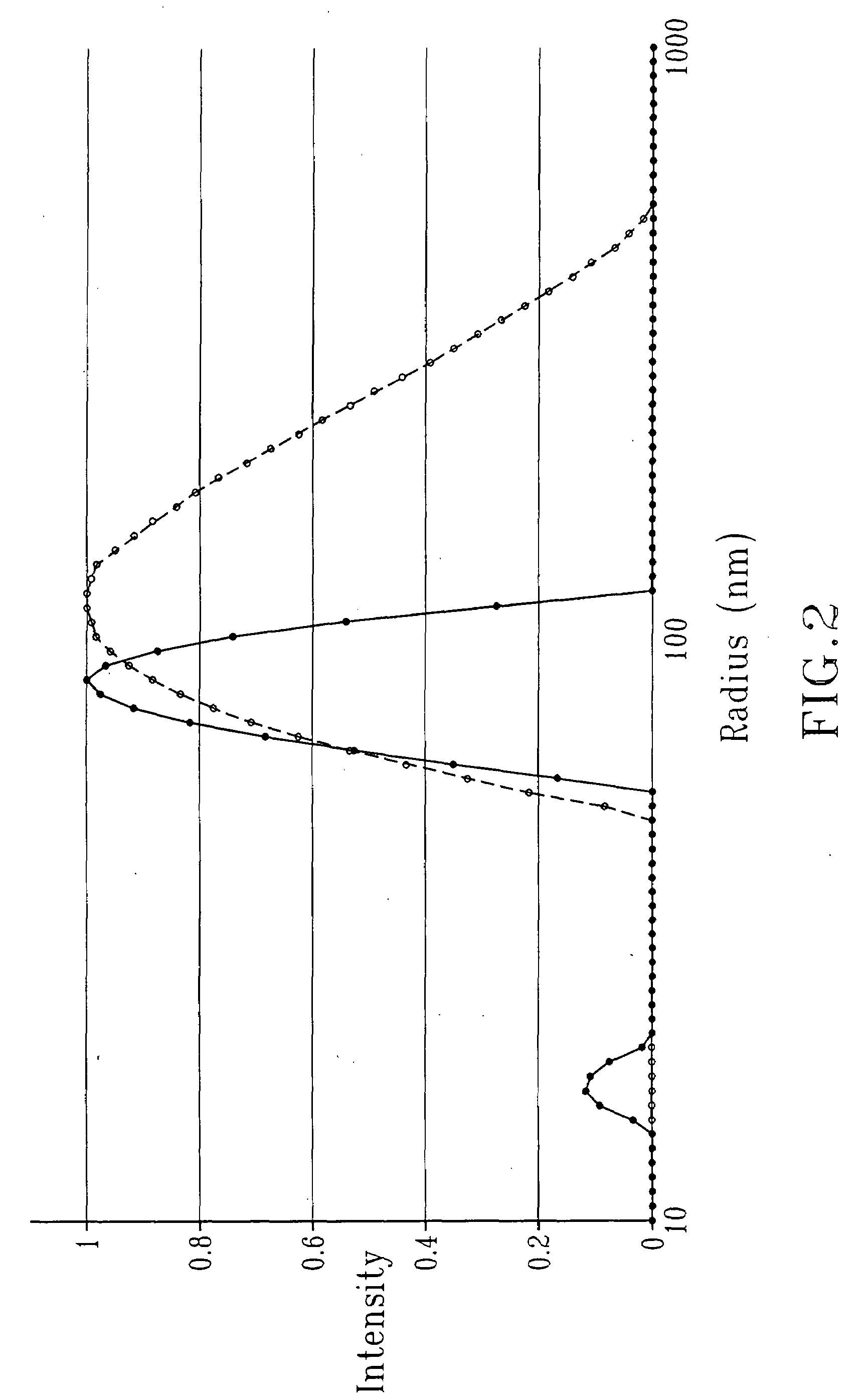Method of producing finely divided oil-in-water emulsions
a technology of oil-in-water emulsion and oil-in-water emulsion, which is applied in the direction of transportation and packaging, other chemical processes, disinfection, etc., can solve the problems of uneconomic, insufficient increase of emulsifier concentration, and large energy input for heating and effective cooling, and achieve cost-effective effects
- Summary
- Abstract
- Description
- Claims
- Application Information
AI Technical Summary
Benefits of technology
Problems solved by technology
Method used
Image
Examples
example 1
Sprayable Cosmetic Lotion
[0070]Step 1:
[0071]36 g of octyl palmitate (TEGOSOFT® OP, Goldschmidt GmbH), 24 g of a polyalcohol mixture having 12 to 14 carbon atoms, which carries on average 8 ethylene oxide units (C12 / 14E8), 10 g of water and 30 g of glycerol were combined and stirred. A homogeneous and transparent microemulsion phase which was a single phase at room temperature was formed, whose single-phase region (Winsor IV system) was in the temperature range between 19° C. and 31° C.
[0072]Step 2:
[0073]One part of the microemulsion phase was stirred at room temperature into five parts of water. A homogeneous, milky, finely divided O / W emulsion was formed. The emulsion obtained in this way was stable in the storage test at −15° C., −5° C., 5° C., room temperature and 40° C. for three months.
[0074]The droplet size of the O / W emulsion obtained in step 2 was determined using dynamic light scattering following dilution with a twenty-fold amount of water to an oil / surfactant concentratio...
example 2a
Impregnation Lotion for Producing Cosmetic Wet Wipes
[0075]Step 1:
[0076]36 g of octyl palmitate (TEGOSOFT® OP, Goldschmidt GmbH), 27 g of C12 / 14E8, 12 g of water, 18 g of glycerol, 3 g of preservative (Euxyl® K 300, Schülke & Mayr (phenoxyethanol, methyl-, ethyl-, butyl-, propyl- and isobutylparaben)) and 3 g of trilaureth-4 phosphate (Hostaphat® KL 340 D, Clariant) were combined and stirred. A homogeneous and transparent microemulsion phase which was a single phase at room temperature was formed, whose single-phase region (Winsor IV system) was in the temperature range between 8° C. and 43° C.
[0077]Step 2:
[0078]The microemulsion phase was stirred at room temperature into a five times larger amount of water. A homogeneous, milky, finely divided O / W emulsion was formed.
[0079]The droplet size of the O / W emulsion obtained in step 2 was determined by means of dynamic light scattering following dilution with a twenty-fold amount of water to an oil / surfactant concentration of about 0.5%. F...
example 2b
[0081]Step 1:
[0082]36 g of octyl palmitate (TEGOSOFT® OP, Goldschmidt GmbH), 27 g of C12 / 14E8, 12 g of water, 3 g of preservative (Euxyl® K 300, Schülke & Mayr (phenoxyethanol, methyl-, ethyl-, butyl-, propyl- and isobutylparaben)) and 3 g of trilaureth-4 phosphate (Hostaphat® KL 340 D, Clariant) were combined and stirred. An emulsion cloudy at room temperature was formed which, after a short time, separated into a two-phase system of the Winsor I type. Upon heating and stirring, above 70° C., a single phase, homogeneous and transparent microemulsion phase was formed, whose single-phase region (Winsor IV system) was in the temperature range between 70° C. and 85° C.
[0083]Step 2 (PIT Method):
[0084]The microemulsion phase was quenched in a water bath at room temperature. A homogeneous, transparent, finely divided O / W emulsion was formed.
[0085]The O / W emulsion obtained as in step 2 was diluted as in Example 2a to an oil / surfactant concentration of about 0.5%, and the droplet size was d...
PUM
| Property | Measurement | Unit |
|---|---|---|
| Temperature | aaaaa | aaaaa |
| Fraction | aaaaa | aaaaa |
| Particle size | aaaaa | aaaaa |
Abstract
- A) producing a mixture 2, which has oil, water, at least one emulsifier and at least one cosmotropic substance, by mixing oil, water, at least one emulsifier and at least one cosmotropic substance, where the phase inversion temperature PIT2 of this mixture (Winsor IV system) is less than the phase inversion temperature PIT1 of a mixture 1 (Winsor IV system) which has no cosmotropic substances and otherwise the same composition as mixture 2,
Description
Claims
Application Information
 Login to View More
Login to View More - R&D
- Intellectual Property
- Life Sciences
- Materials
- Tech Scout
- Unparalleled Data Quality
- Higher Quality Content
- 60% Fewer Hallucinations
Browse by: Latest US Patents, China's latest patents, Technical Efficacy Thesaurus, Application Domain, Technology Topic, Popular Technical Reports.
© 2025 PatSnap. All rights reserved.Legal|Privacy policy|Modern Slavery Act Transparency Statement|Sitemap|About US| Contact US: help@patsnap.com



